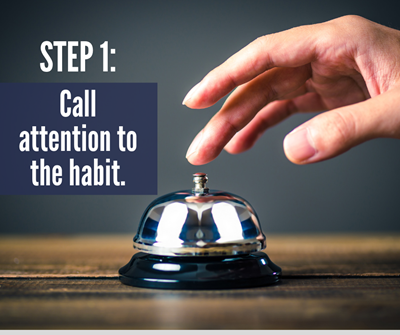
"Targeting um and uh themselves does not solve the problem. They are merely symptoms. If we are going to minimize our use of fillers, and benefit from the impression of control and authority that this gives, we should understand the good reasons why these conversational traffic signals exist."
– Linguist N.J. Enfield on the whys and hows of filler language
One of the most frequent requests we get as a public speaking school is this one: Help me stop saying uh and um.
Filler words and sounds exist for a reason. They help us keep the floor in conversation while we think of our next words.
In speeches, presentations and media interviews, though, if used a lot they become a problem.
You know that, of course. Someone has probably driven you nuts with their steady stream of uhs and ums. You find yourself zeroing in on the repetitive thud of the filler instead of the substance in between.
As with most elements of public speaking, there is no magic button. But there are steps you can take to rein in the uh-uh-umming:

1. Become painfully aware you have the habit.
Some speakers have no idea how much they rely on filler sounds. Others have an inkling but don't grasp the size of the problem.
Some speakers need a way to feel their audience's pain. At the school, we use the "dread bucket" to make the point, dropping a large marble into a metal pail every time the speaker says uh or um.
You can also try less unsettling methods each time the speaker makes a filler sound:
- Ring a small bell
- Raise your hand
- Clap
- Put a book in their arms for each sound (a great way to visualize the number)
- Videotape or record the speaker presenting
Some people, once they're made aware, are able to instantly drop them from speeches. Most speakers have to work a bit harder, though.

2. Remove them from your everyday conversations.
One way to reduce your reliance on filler sounds when you're under pressure is to get out of the habit of using them when you talk casually to family, co-workers, and friends.
Cut it out altogether. Buckley coach Jenny Maxwell says this has helped her more than anything else she's done.
Here are some other tips for minimizing filler we've heard that make some sense--and also happen to be good public speaking advice in general:
- Keep your hands out of your pockets. You seem to think better and be more relaxed when moving easily and naturally.
- Tell stories to get more comfortable and to make your point. Many people will move out of their hesitant uh-uh-uh pattern as soon as they launch into a story.
- Speak in short, direct sentences. Shorter sentences are easier for audiences to follow—and they might also be easier for you to deliver without having to search for words.

3. Practice public speaking with a focus on pausing instead of saying uh or um.
One of the best replacements for an um or uh in a speech is nothing—as in, silence.
Speakers are often much better off pausing silently to collect their thoughts, because those pauses can add some suspense or allow the audience to think about what’s been said and keep up.
Silent pauses also add to a presenter's appearance of ease and control. As we often point out at the school, only the confident speaker is comfortable with silence.

4. Accept that a few won't kill anyone. Know what's okay and what needs to go.
Most languages have their filler sounds. Most speakers use a few. One study by linguists found that, on average, American speakers of English use two to three filler words per minute.
Linguists have also found that filler use is higher among younger people and is different between men and women. If you find that fascinating, you can read more here.
While we're all for reducing filler, we are not that concerned about an um or uh once a minute. We’re much more concerned about the speaker who adds filler multiple times in a sentence or who starts every sentence with uh or um.
So how do you know when it's too much? First, scroll up and see Step 1. Then, in general, we urge speakers to:
- Work on getting out complete thoughts without inserting filler sounds.
- Avoid recognizable patterns because the audience will pick up on them and be distracted by them—for example, the speaker who precedes every sentence with um or the person who always says three-words-and-uh.
- Don't emphasize the filler. Sometimes, speakers will give the greatest vocal emphasis to the filler sound—as if it is the most important word in the sentence.

5. Cultivate the artful use of the uh or um.
Sometimes, an uh or um can be useful, expressive, even downright charming:
- You can use an uh deliberately, to show amusement or skepticism.
- Perhaps English is not your native language, and you have that lovely European way of searching for the word you need saying uh-uh-uh.
- Maybe you are a guest on a podcast or hosting a conference call where you can't afford a moment of silence (because it will sound as if you've stopped talking or you're experiencing technical difficulties).
- It helps to understand audience expectations: If you're answering a question, your audience might expect (even appreciate) that you are searching for the right words. If you are giving prepared remarks, they might expect you to find the right words before you step onto the stage--and have less tolerance for uhs and ums.
The key is to be deliberate—to have control of the sound—not use it without awareness or drop it in by default.






